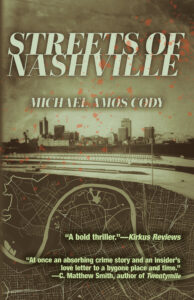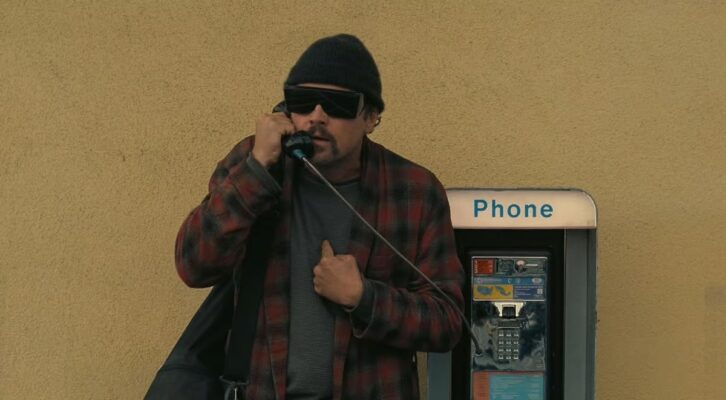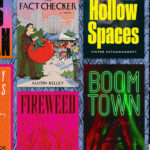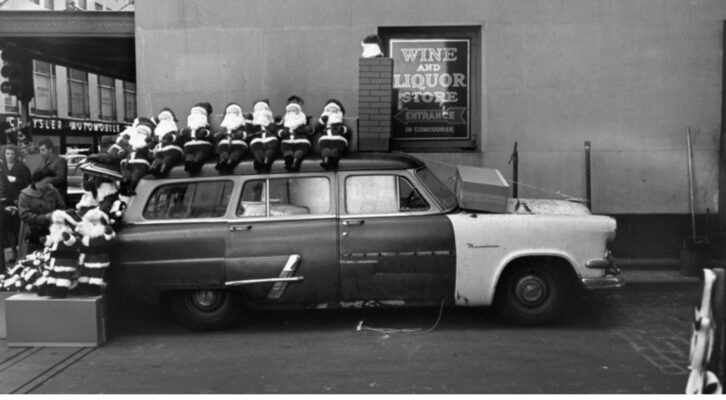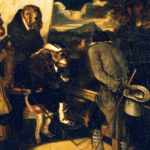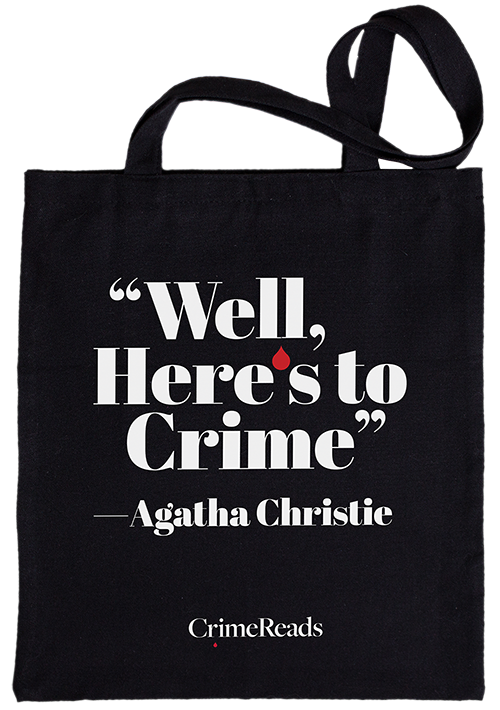A bullet on the music charts can make a recording career—“number seven with a bullet!” A bullet in the chamber of an assassin’s gun can cost a young man his dreams of a career in the music business. A bullet scooped up from a homemade target range can bring a killer to justice.
Late on the evening of March 9, 1989, Kevin Hughes, twenty-three, chart director at Cash Box magazine (a music industry trade publication competing with Billboard), was hanging out with Sammy Sadler, a recording artist and promoter associated with Evergreen Records. They were leaving the Evergreen offices just before 10:30 when a man dressed in black stepped from the shadows and opened fire. Sadler was settling into Hughes’s car when he took the first round in the arm and shoulder. Hughes fled south on 16th Avenue, but two bullets in the back brought him down. The shooter left Sadler wounded but alive and hobbled to where Hughes lay, fired two rounds into the back of his victim’s head, and disappeared into the shadows.
Initial speculation about the murder ranged from a mugging gone wrong to a hit to protect some dark music business secret. The dark secret scenario came closest to the truth. Kevin Hughes was an honest man with a passion for the business of music, particularly for the metrics that go into creating chart rankings. He was responsible for receiving airplay information from radio stations and using that raw data to create the weekly charts. While other chart sources were making the move to computers, Cash Box continued to build charts essentially by hand, which opened the process to abuse.
Chart fixing schemes took place in a variety of ways, but in a typical scenario, a starstruck country music wannabe (actual talent optional) would pay several thousand dollars to an individual to record and promote a song to radio stations. The producer/promoter would then pay personnel at some payola-friendly stations to exaggerate the number of times a song played in a given airplay reporting period, during which they might not have been spinning the record at all. Exaggerated reports landed songs on charts such as Cash Box’s Country Music Independent Chart even though nobody was playing or hearing them.
When Kevin Hughes recognized that the charts he managed weren’t agreeing with his research, he began to take action. He dropped several of the stations he suspected were making false reports. This threatened to remove songs from chart positions already bought and paid for. Then, when it seemed Hughes was considering blowing the whistle on a scheme raking in significant under-the-table dollars, he was murdered on Nashville’s 16th Avenue South, part of famous Music Row.
In March 1989, I’d been living in Nashville for eight years. I came to town to write songs and pursue a recording career. I arrived in the company of—and under a ten-year contract to—an amateur, possibly shady manager. He soon hooked us up with a guy who offered me a recording and publishing deal. Within a year, this Nashville guy maneuvered me out of the binding management contract and into five-year contracts with him. We recorded two albums’ worth of my music, in 1982 and 1984, neither of which saw the light of day. When my five-year contract expired, I walked away from that situation but not from Nashville, spending the next few years continuing to write songs, playing in bands, and working a succession of jobs (retail clerk at Cat’s Records, cleaner of swimming pools, driver of the equipment truck for a country music star, and staff songwriter for a couple of other small music publishing companies).
To my knowledge I was never directly caught up in the kind of scheme Kevin Hughes threatened to expose at Cash Box, but I suspect my producer/publisher worked close to that dark edge. Still, I was thrilled to live in Music City. During my time there one of my regular activities was walking 16th and 17th Avenues—Music Row—and imagining all the music and deals taking place in the Row’s record label offices, recording studios, and publishing houses. I think it more than likely that one of these walks took me by the Cash Box offices where Kevin Hughes worked. I might have even passed him on the sidewalk or stood behind him in line at the International Market near Belmont College, which we both briefly attended (but not at the same time).
When I began writing my thriller, Streets of Nashville, more than thirty years later, the story I had in mind wasn’t that of a murdered young Cash Box chart director. Yet that death still haunted me. The novel begins with a fictionalized account of the attack on Hughes and Sadler. Then, fifteen days later, gunfire echoes again along the Row when four people are shot—three fatally. Tenderfoot songwriter Ezra MacRae—out on the town to celebrate the first good fortune he’s had with his songs—witnesses the triple homicide. But the masked gunman spares him. Why?
My more mature reflections on that time shone a new light on the events of March 1989. Nashville was on the knife edge of uncertainty. As the digital age loomed, changes to Music Row’s traditional business practices—legal and illegal—were imminent. Crime was skyrocketing, even on the hallowed Row, where sidewalks began to fill with strangers—transients and tourists and starry-eyed hopefuls with guitars on their backs. The old facades of “Music City, U.S.A.” and “Athens of the South” cracked as Nashville exploded. By the time the 1989 murder of Kevin Hughes was solved, Nashville had become home to the NFL’s Tennessee Titans, the NHL’s Nashville Predators, and almost a quarter million more residents.
In 2002, Nashville detectives working the Kevin Hughes cold case received a tip that destroyed the thirteen-year-old alibi of Richard F. “Tony” D’Antonio, who had been Cash Box’s chart director before Hughes. Investigators were led to a backyard target range where the ground was littered with years’ worth of bullets and casings. The informant had sold a .38 caliber handgun to D’Antonio the afternoon of the Hughes murder and promised to provide the alibi. A Nashville detective took a single scoop of bullet fragments to the lab and was shocked that within twenty-four hours one wadcutter bullet was determined to be a perfect match for those taken from Hughes’s body thirteen years before. While D’Antonio was finally convicted of the murder in 2003, however, he was believed to be only the executioner. Allegedly Chuck Dixon, record promoter and Cash Box executive, was the one who wanted Hughes dead for threatening his lucrative chart fixing revenue stream. But Dixon could not be tried, as he’d died of cirrhosis of the liver in December 2001.
In January 1990, ten months after that fateful March, Robert Stack narrated the investigation and reenactment for Unsolved Mysteries. One of the interviewees was none other than Chuck Dixon, believed to be ultimately responsible for the death of Kevin Hughes. In a segment showing him sitting with crossed legs in a black leather armchair, he says of Hughes’s position as Cash Box chart director, “It’s a lot of work, and in my tenure as a promoter, I’ve been through probably twelve, fifteen, maybe even more chart directors. And [Hughes] was probably, overall, not only the best but the most fair.” Yet outside the minds of Dixon and D’Antonio, nothing was fair about that murder on Music Row.
***


